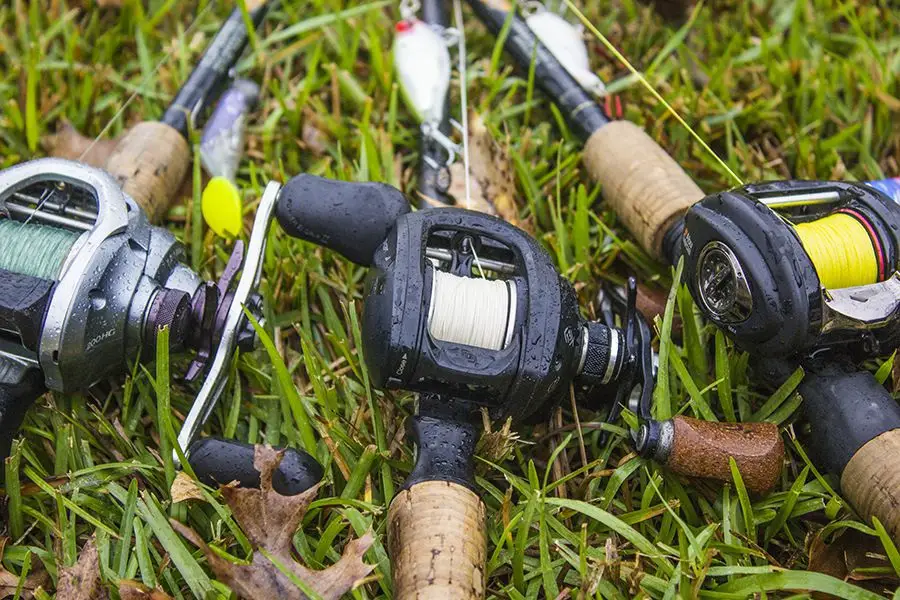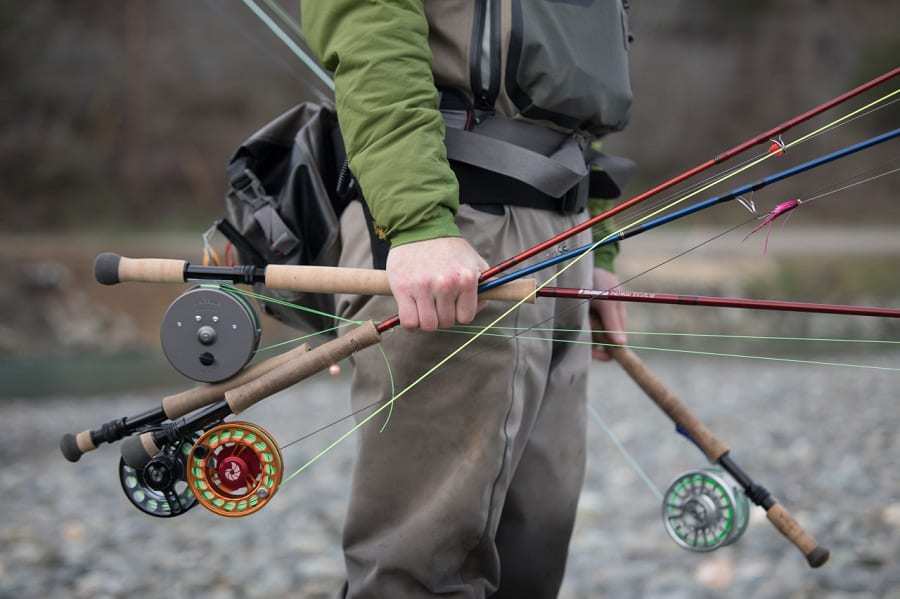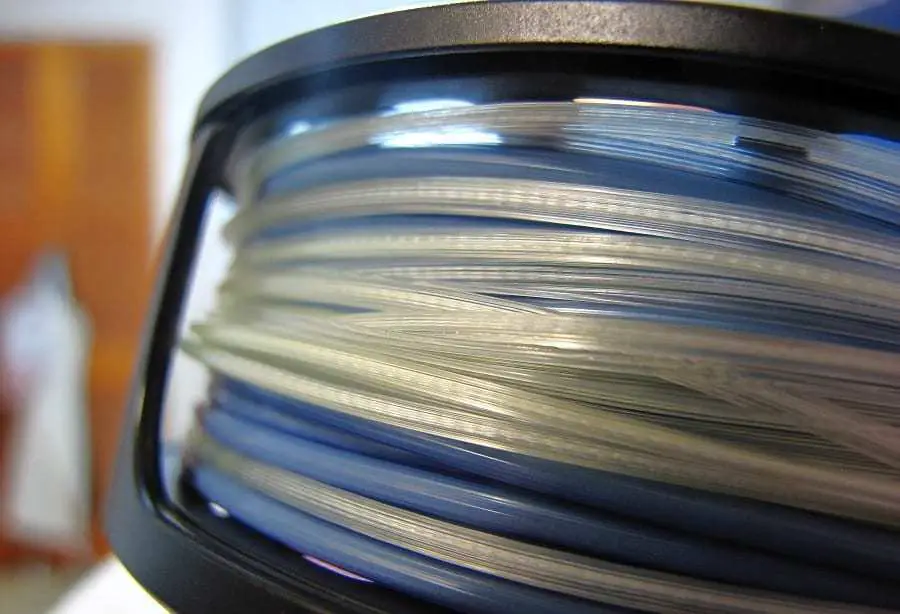Are you looking at getting a new baitcaster but aren’t sure which size is best? Perhaps you are new to the world of baitcasters and aren’t sure what size you need.
Maybe you are curious and want to know more? Whatever your reason might be, we have the answer for you!
We know how challenging it can be to select the right baitcaster, and there are so many different factors to consider that we often neglect size and end up with a baitcaster that is too big or small or unsuitable for our needs.
And we know just how frustrating that can be when you end up with a reel that is unsuitable!
Well, no more! Today we are here with an in-depth explanation of baitcaster sizes (and plenty of examples) to help you find the right-sized baitcaster for you!
Keep reading to find your perfect size and get your baitcaster. Don’t forget to check out our handy size chart to glance at the different sizes available to you.
Baitcasting reel sizes explained
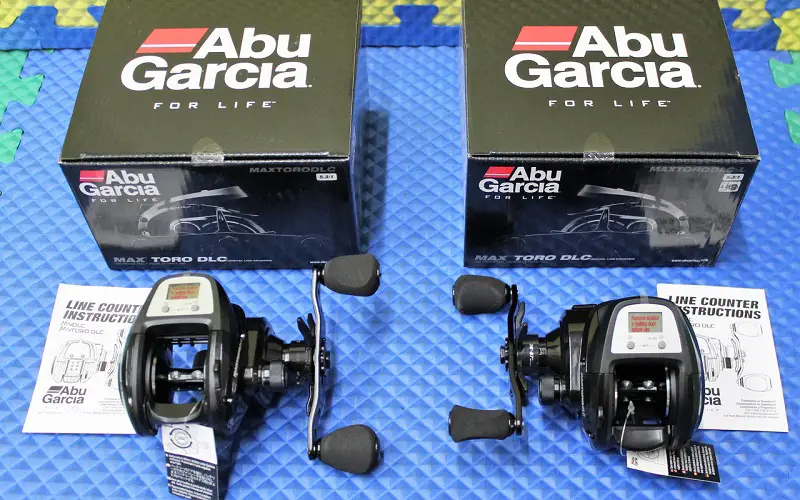
Let’s get straight into it! Most baitcasting reels come in sizes from 100 to 400, but there are those out there with sizes between 10 and 40.
When selecting your reel, you want to look at the first digit to ensure you make the best purchase for yourself.
It’s worth noting that baitcaster sizes are not massively standardized, so there can be a big difference between manufacturers.
Some manufacturers don’t even follow a sizing convention! Instead, some manufacturers will use their line capacity rating that you can use to choose your size.
Thankfully most of the major brands use the 100 to 400 size rating, so once you have mastered that, you can follow along to find out which baitcaster is best for you.
Don’t worry; we will be covering this in plenty of detail today if you aren’t already familiar with the size rating!
Baitcasting reel size chart
| Baitcaster reel size | Retrieve rate | Max drag | Recommended use | Weight | Line capacity (lb/yd) |
| 50 | 23” to 29.” | 10lb | Ultralight fishing for bass and trout | 5oz | 12/65 |
| 70 | 23” to 32.” | 10lb | Finesse Fishing for bass | 6oz | 12/85 |
| 100 | 26” to 34.” | 11lb | Most bass fishing | 7oz | 12/120 |
| 200 | 26” to 36.” | 12lb | Heavy bass fishing | 8oz | 12/200 |
| 300 | 26” to 36.” | 22lb | Inshore saltwater fishing | 11oz | 12/260 |
| 400 | 26” to 38.” | 25lb | Inshore saltwater fishing | 12oz | 12/330 |
As we can see, the above table compares low-profile baitcaster reel sizes. To create the table, we looked at the following specifications:
- Retrieve rate (inches per turn of handle)
- Maximum drag pressure (lb)
- Weight (oz)
- Monofilament line capacity (lb/yd)
It’s worth noting that the information in the table above has been taken from the specifics on the reels as stated by the manufacturers. That’s why there is some variation across the board.
While the specifications can vary between the models, the trends on the table can be used. We can see that smaller baitcasting reels tend to be lighter and come with lower retrieval speeds, drag pressure, and line capacity.
This is usually attributed to the lighter weight of the reel. These smaller reels will also naturally have less room for line, hence the lower line capacity.
But why are we noticing lower maximum retrieval rates and drag pressure on the smaller reels? Let’s explore this issue in more depth now!
First, let’s look at the retrieval rate. The retrieval rate is determined by both the diameter of the spool and the gear ratio.
The gear ratio shows how many times the spool rotates when you turn the handle once. This determines the speed of your retrieval rate, with higher gear ratios translating to faster retrieval rates.
Along with this, the spool diameter also impacts retrieval speed. If you turn a large spool once, it will wrap more lines around the spool than if you turned a smaller spool once.
The amount of line spooled per turn of the handle will vary depending on how wide the spool is, and it will also vary depending on how much line is already on the spool too!
If you have a small reel and cast your lure far out, you will notice a lower retrieval rate at the start rather than at the end of your retrieval.
Bigger spools also provide more surface area for the drag system to apply pressure and generate friction. It’s because of this that we see bigger reels come with higher maximum drag pressure.
Smallest baitcaster sizes
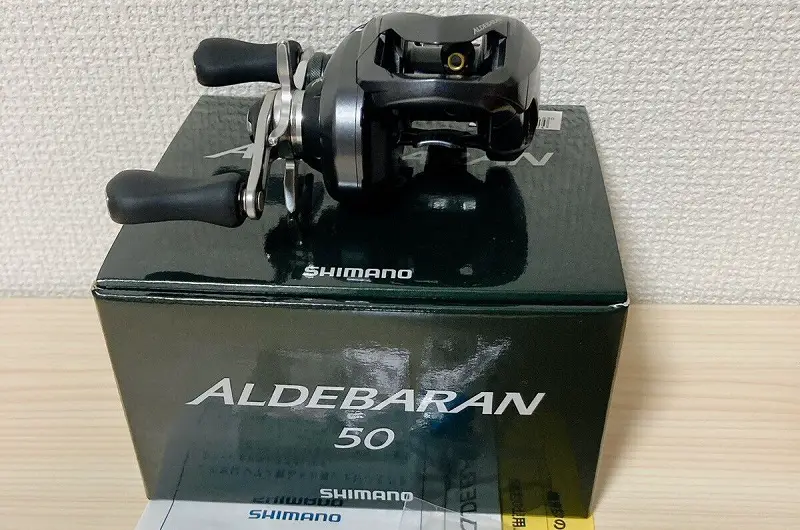
As we mentioned earlier, most baitcaster reels will start at size 100. But there are some manufacturers out there that offer reels smaller than this. In some cases, you can get size 50 and 70 baitcasters.
Three of the most common are:
- Daiwa Steeze CT SV (size 70)
- Shimano Curado 70 (size 70)
- Shimano Aldebaran MGL (size 50)
The size 50 is the smallest on the market at the moment. It is uncertain whether we will see manufacturers bring out even smaller sizes, although it would be interesting to see how they perform!
A size 50 is typically used for ultralight castings, such as for trout and small bass. These reels are usually used in creeks and ponds only too.
It’s important that when purchasing your reel, you choose the right size for your intended application.
Size 70 reels, on the other hand, are capable of catching and handling bigger fish and can work with longer distances too.
These factors allow the reel to work as a finesse baitcaster for bass fishing when you are downsizing baits and tactics. Many bass anglers keep a size 70 reel and lightweight casting rod on their body for when they need to throw smaller lures.
This is usually done when fish don’t respond to your regular tactics and need to change.
For those that are interested in lightweight applications, it’s worth looking at spinning reels. These are usually reels used for ultralight tactics and tend to be cheaper than baitcasters.
We have a whole host of articles on our site about these reels, so be sure to check them out!
100 size baitcaster
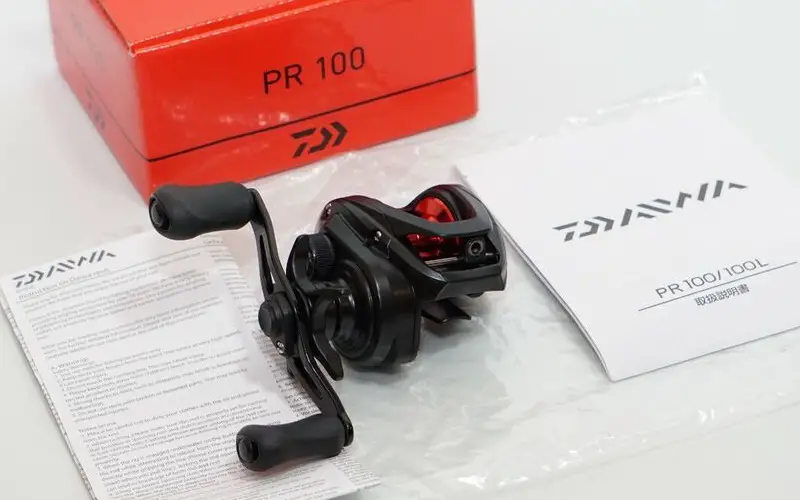
Moving up in size, we have the 100 baitcaster. This is considered the best all-round option for low-profile baitcasters.
It’s one of the most popular sizes used for bass fishing and will work well with most bass fishing applications. Some of the most popular models are:
- KastKing Speed Demon
- Daiwa Tatula 100
- lew’s Speed Spool
Some manufacturers also offer a 150 size baitcaster which sits bang in between a 100 and 200. The Tatula 150 and Shimano SLX are fine examples for casting heavier lures or using stronger lines.
Bass anglers often choose to use a 150 size reel when fishing close to cover as you can spool a heavier braid, helping to fight through cover and get your fish! If you are pitching jigs or flipping near heavy cover, then an extra-strong line can be a good idea! And a 150 reel allows you to spool more of this reel with ease.
200 size baitcaster
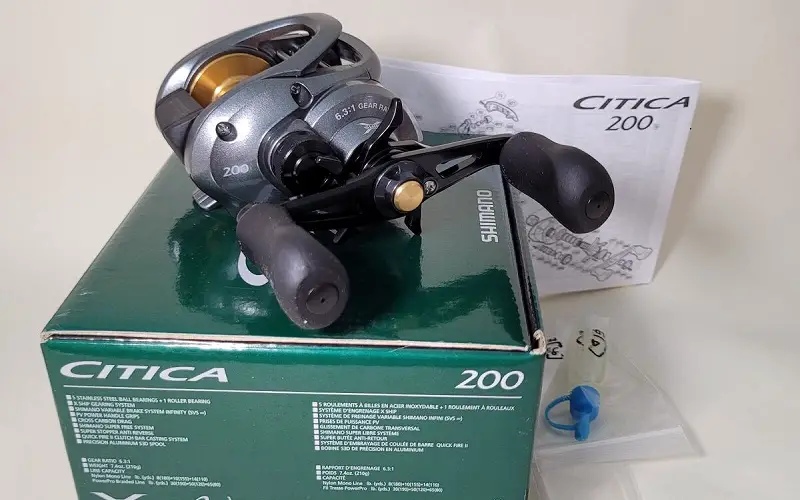
Moving up in size, we have the 200 baitcaster, which is ideal for your heavy bass fishing needs! We recommend this size if you want to spool a 65 or 85lb test braided line. So what are some of the better 200 baitcasters? Well, you could choose from any of the following:
- KastKing Royale Legend II 200
- Shimano Curado 200
- Daiwa Tatula 200
So what is so good about these reels? Well, they have a far greater line capacity than smaller models, meaning you can expect longer casting distances.
Now, casting distances might not seem overly important for those looking to do some bass fishing, but if you are fishing large flats or open water bass, then the long line capacity is sure to come in handy!
Some anglers also like to use this size reel when fishing topwater frogs on extended grass flats. These 200 size baitcasters will allow you to achieve greater casting distances, covering more ground!
If you need more line capacity, then a 200 size baitcaster might be the one for you!
300 size baitcaster
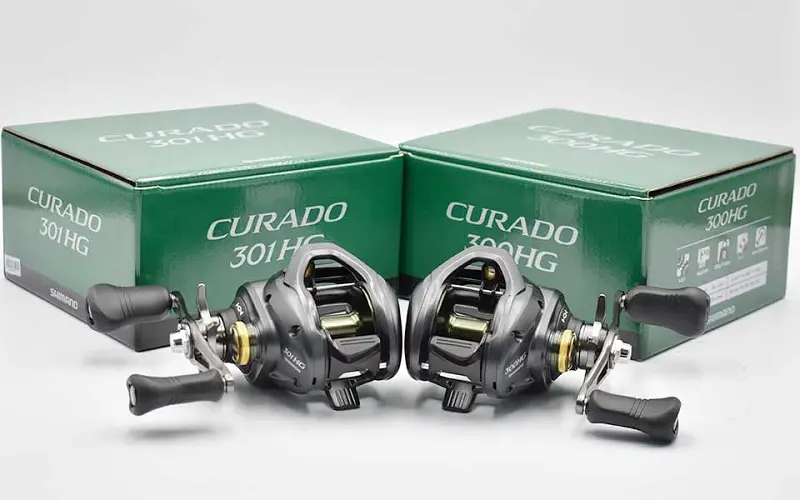
Next, we have the 300 sizes, which are commonly used for saltwater fishing. It features a much higher line capacity and maximum drag pressure than the smaller models we have looked at.
What does that mean for you? It means you can spool stronger test lines and throw bigger lures over longer distances, allowing you to fight bigger fish!
Does that sound like the size reel for you? Well, choose from one of our three choices below!
- Shimano Tranx 300
- Shimano Curado 300
- Daiwa Lexa 300
Like the 200s we just looked at, a 300 reel will deliver extra long casting distances ideal for a range of different fishing situations where you need the extra length.
400 size baitcaster
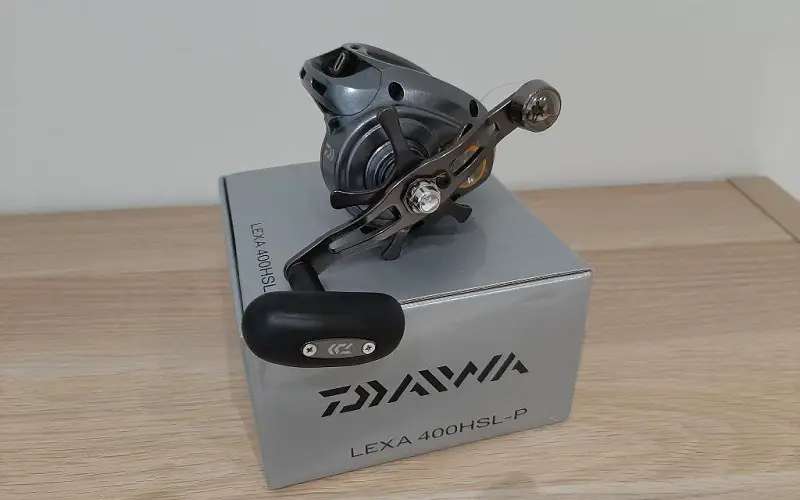
Finally, we have the biggest size today, the 400 size reel. These are only used for saltwater fishing and generally feature an all-metal construction.
400 reels usually come with shielded ball bearings too, which help to prevent corrosion we often see caused by saltwater fishing.
Into saltwater fishing? Then choose from one of these reels:
- Shimano Calcutta 400
- Shimano Tranx 400
- Daiwa Lexa 400
These bigger reels are built to handle the extra stress casting and retrieving bigger rigs and baits can give, especially in stronger currents. But be sure that they have shielded ball bearings to ensure they can handle the salt water and sand exposure without getting damaged or jammed.
What size baitcaster should you use for bass?
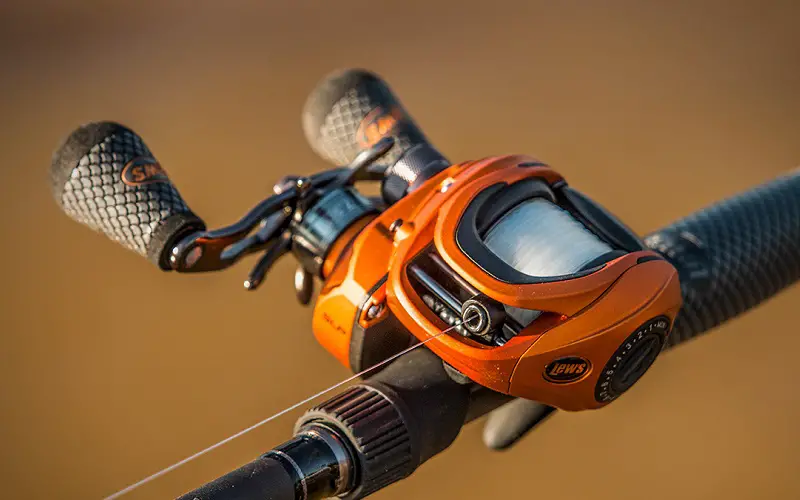
Now that we have covered the different-sized baitcasters, you might wonder which size is right for bass?
Well, those looking for a good all-rounder to catch bass with should opt for a size 100 baitcaster. These reels are ergonomic and comfortable enough to use all day without feeling tired, and their smaller size makes them perfect for this while still holding enough line capacity to give you the spool you need.
A 100 size baitcaster is plenty big enough to catch the bass you want without worrying about running out of spool!
For those who like to use larger lures or tend to fish near heavy cover, you will be better suited to a 150 size baitcaster. These will allow you to spool a heavier braid without putting unnecessary pressure on your reel.
And for those that enjoy fishing on extended grass flats, you will want a 200 size reel!
These will give you the longer casting distances you need, generally offering double the line capacity a smaller reel can give you!
For those that like to use finesse tactics for bass, and aren’t ready to make the switch to a spinning reel, then a 70 baitcaster has your name on it!
These smaller reels are perfect for throwing lightweight lures and will be the perfect addition to your setup.
Low profile vs. round baitcaster sizes
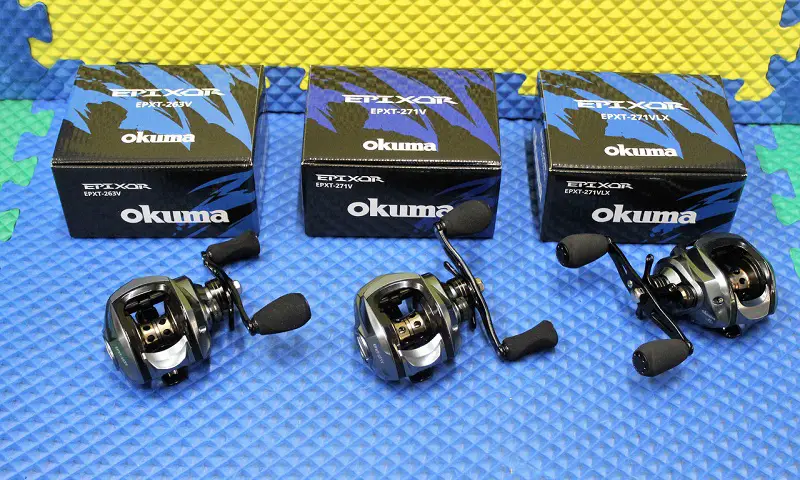
The sizes discussed today apply to the low-profile baitcaster. These are the most popular models today, regularly used by anglers. But you might be wondering, what about round baitcasters?
Well, round baitcasters feature a large round spool that usually comes with more line capacity than the low-profile models we mentioned today.
These types of baitcasters tend to be better for trolling and have the line capacity for hundreds of yards of the heavy-pound test line.
It’s worth noting that these reels tend to be heavier and not as ergonomic as low-profile reels, and they can be harder to hold for longer periods and aren’t recommended for those that enjoy a lot of casting.
Round baitcasters come in larger sizes than low profile baitcasters, usually starting at 1,000 and climbing up to 10,000!
Some manufacturers will list 1000 as 10, so be aware of this when shopping for your round baitcaster. Be sure to consider all the factors listed today and buy the baitcaster that’s right for you!
How to choose the right size baitcaster
So how do you pick the right size baitcaster for you? When shopping for your new baitcaster, be sure to consider where you will be fishing and what kind of fish you want to catch.
If you are looking for largemouth and smallmouth bass in rivers, ponds, and lakes, then a 100 size reel is your ideal option.
It’s light enough to use all day and still comes with enough line capacity for regular casting distances, a must-have for most bass fishers!
And as basses don’t pull a lot of lines when you fight them, you don’t need to worry about running out of line! Instead, you can just enjoy your fishing experience.
For those fishing for bigger bass in heavy cover, it’s worth opting for a 150 or 200 size reel. These will allow you to spool an extra heavy line and reduce the chance of losing fish due to line breakages!
For those looking to bump up the casting distance, a 200 reel would be the better option, and it will allow you to cast for longer and fight any flat grass that might be between you and your potential catch!
And for those that enjoy inshore saltwater fishing, then a 300 or 400 reel is the better option for you. These larger sizes boast a larger line capacity than smaller models, allowing you to spool stronger braid and lots of it!
They also feature more drag power, helping you fight tougher fish like bluefish or trevally. Consider the type of fishing you wish to catch and use this to help decide on the size baitcaster you need.
Final thoughts
And there you have it! The different sizes of baitcaster reels are available, and some helpful tips to help you decide which is the best size for you!
Be sure to spend some time considering the perks of all these sizes before selecting the best fit for you.
Remember, you will want plenty of line capacity and casting distances to fight larger fish, but smaller ones can get away with more lightweight and smaller reels.
Whichever you decide is best, be sure that you don’t forget to consider the size of the reel when shopping for your next baitcaster!
References:


